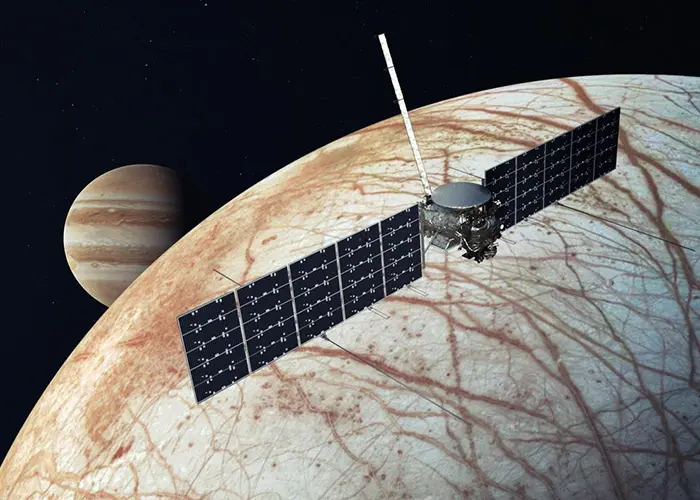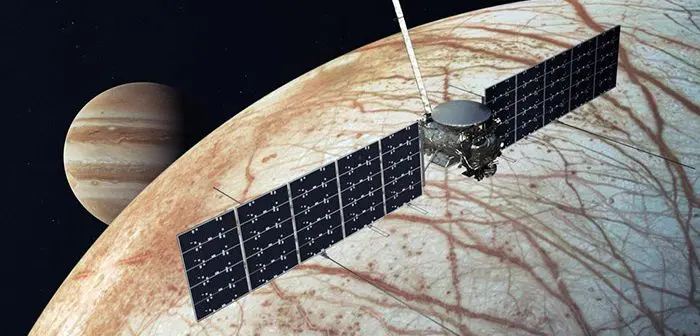
NASA and SpaceX are targeting a launch period opening October 10, 2024, for the agency’s Europa Clipper mission, which will help scientists determine if one of Jupiter’s icy moons could support life. The mission will use a SpaceX Falcon Heavy rocket and lift-off from the Kennedy Space Center.
Europa Clipper will carry nine instruments and a gravity science experiment onboard to gather detailed measurements as it orbits Jupiter and conducts multiple close flybys of its moon, Europa. Research suggests an ocean twice the volume of all of Earth’s oceans exists under Europa’s icy crust.
Clipper’s primary science goal is to determine whether there are places below the surface of Europa that could support life. The mission’s three main science objectives are to understand the nature of the ice shell and the ocean beneath it, along with the moon’s composition and geology. The mission’s detailed exploration of Europa will help scientists better understand the astrobiological potential for habitable worlds beyond our planet.
Managed by Caltech in Pasadena, California, NASA’s Jet Propulsion Laboratory in Southern California leads the development of the Europa Clipper mission in partnership with the Johns Hopkins Applied Physics Laboratory (APL) in Laurel, Maryland, for NASA Headquarters in Washington.
APL, in collaboration with JPL and NASA’s Goddard Space Flight Center, designed the main spacecraft body. The Planetary Missions Program Office at NASA’s Marshall Space Flight Center in Alabama, executes program management of the Europa Clipper mission. NASA’s Launch Services Program, based at Kennedy, manages the launch service for the Europa Clipper spacecraft.





